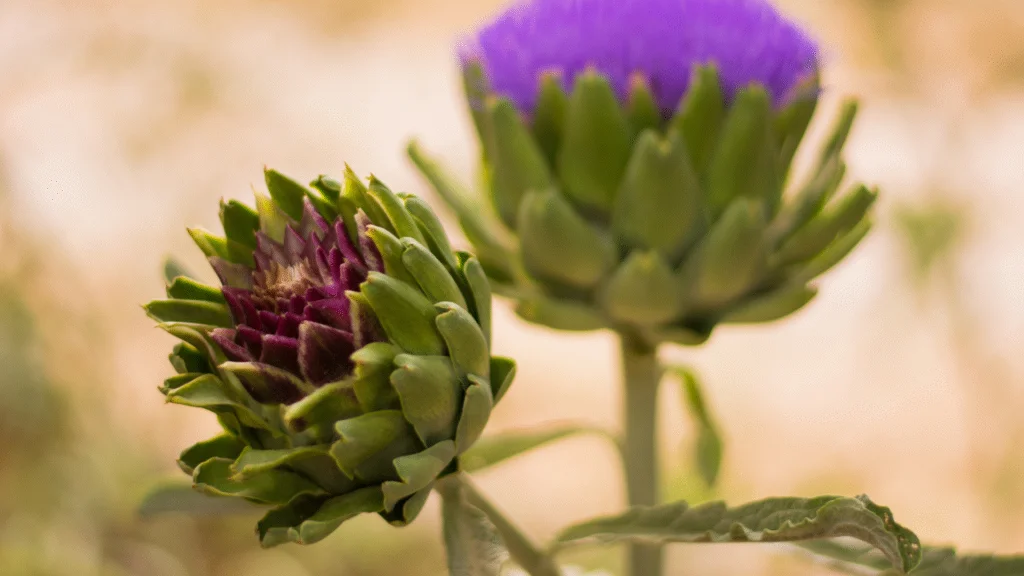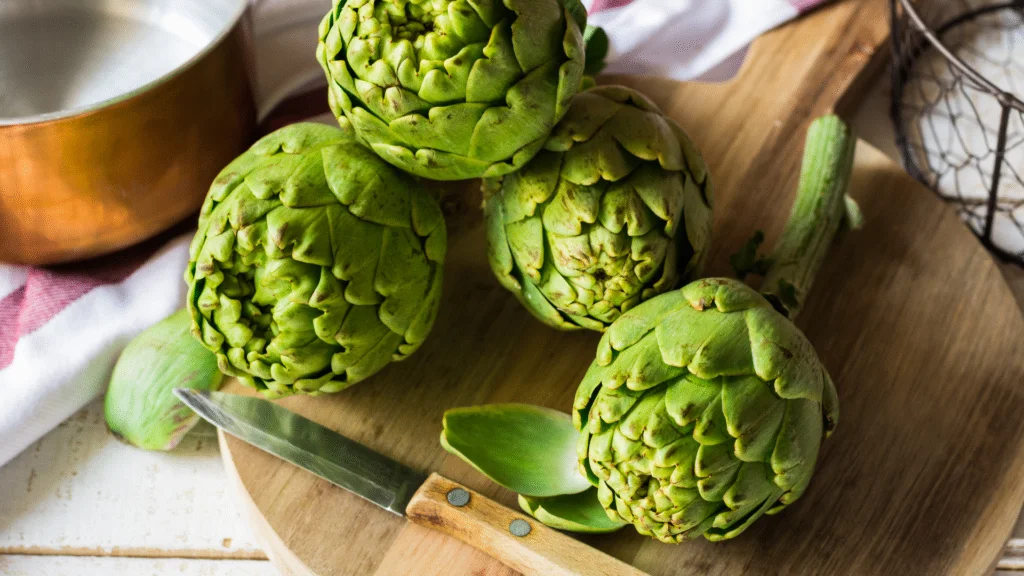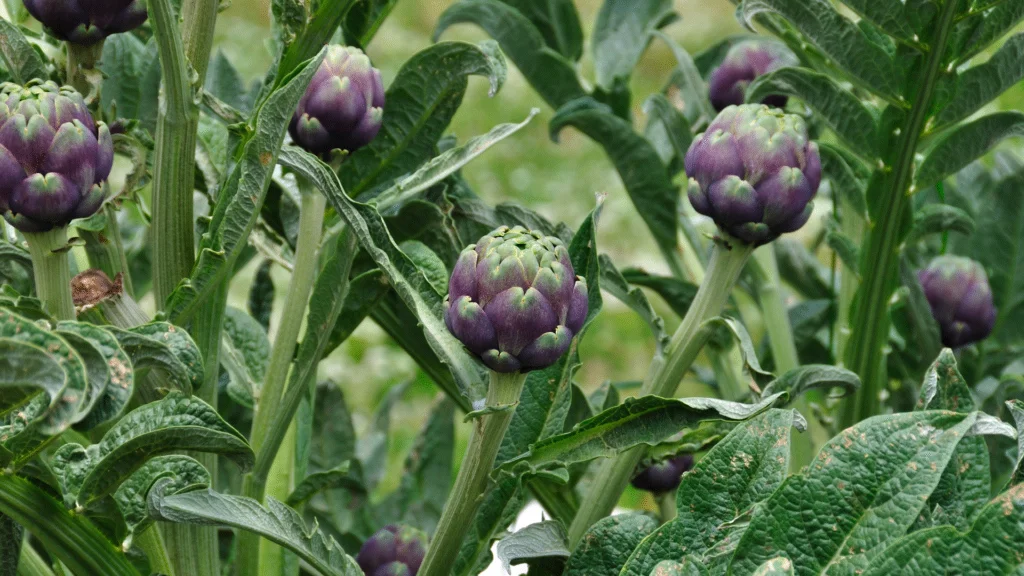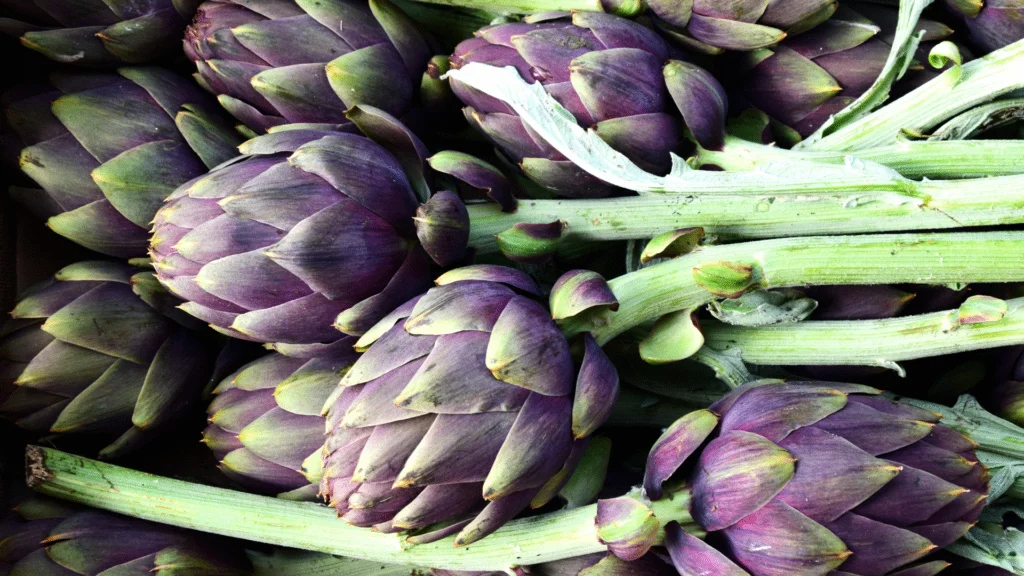How To Plant Artichoke | Cynara scolymu
About Artichokes
The artichoke is a vegetable like no other. It’s unique taste and plant look make it very appealing. This plant was very popular in ancient Mediterranean areas, and is now found all over the world. It was brought to the United States, specifically New Orleans during the Louisiana Purchase in the 19th century. Slowly making its way to Castroville, “ todays the artichoke capital of the world.
This is a cool weather perennial plant, but can also be an annual when grown from seed. If thats what you are looking for. This amazing plant grows to an average height of 3-5 feet tall, and 4-5 feet in width. If you take care of your plant and crop, your plant can survive 4-5 years of good fruit bearing. They will need good drainage, moist soil, and sun to partial shade.
Artichokes will go dormant in hot weather, so depending on where you live this is something to consider. Their main dormancy though is in winter. They hibernate and almost die, and go back to the ground. Know if you want artichokes for years to come, they require protection from severe prolonged frost. In some parts of the country mulching heavily in winter will suffice, and the plant will survive.

Artichoke Varieties
There are a lot of Artichoke varieties to choose from but there are only three that I would recommend growing.
- Green Globe Artichoke – This is the hardiest of the 3 varieties I have provided. UC Davis recommends planting your artichokes Nov – early spring. They will produces flower buds within 3 – 4 months, and will go dormant in the hot, dry summer. This is also the most recognized variety and can be found in most grocery stores.
- Imperial Star Artichoke – This variety has spineless buds. Recommended by UC Davis as a perennial planted in fall or spring in our climatic zone. Produces within 3 – 4 months after transplanting.
- Violetto di Romagna Artichoke – This variety has dark violet buds that turn green when cooked. The spines of this variety soften during the cooking process. I personally do find this variety the most flavorful of the 3 varieties. Make sure to harvest while the fruit is young and sauté or bake whole, in garlic and olive oil, yum.

How To Grow Artichoke
Growing conditions
Artichokes thrive best in their optimal temperature and climate. They like mild, frost-free winters, and long, moist, mild summers. They will thrive in a greenhouse or environment between 50 degrees at night, and 80 degrees during the day. If you live in the northern region of America, or anywhere where there are greater than 100 days of frost, this plant might not be the best to grow outside.
Castroville, CA is in USDA zones 7-9, and does really well there because the fog rolls in in the morning time, and burns off by mid-afternoon. This gives shade for the plant most of the days, but also creates a cover for humidity. Unfortunately we cannot all live in this environment and weather, so we have to do our best with what we have. Try to plant your artichoke after the last frost in early spring. Remember, this plant does not tolerate frost and cold, so check the soil temperatures.
Soil and Fertilizer
Plant your artichoke plants in full and partial sun. This plant loves rich, well-drained organic soil with a pH between 6.5 – 7.0, artichoke plants can thrive in slightly acidic or slightly alkaline soil. I highly recommend planting your artichokes in good homemade compost, that is rich with worms. If that is not possible, use manure and fertilizer when your plant begins to make fruit. When this plant fruits, it requires a lot of energy, so you want to be able to provide that so you can have the largest and best tasting artichokes you can grow. A good fertilizer is one low in nitrogen, like a 5-10-10.
Plant your artichoke rows about 6 feet apart if having more than one row. Plant your started plants 2-5 inches deep, depending on the root structure and how big the plant is. Never disturb the roots. They do not like it when their root are subject to shock. Also, keep the soil evenly moist. It will not produce food, and may cause disease if the plant soil goes from overly wet to overly dry.
When the season is finishing, and winter is near, cut plant back to about 10 inches. Cover the plant with a basket or a box, whichever you have, and mulch the soil underneath with a foot of straw or leaves to help maintain the root temperature. Remember, this plant can give you 4-5 years of fruit if properly cared for. Artichokes require vernalization, which is a process where the plant experiences cooler temperatures such as below 50 degrees, for a few weeks, in order to accelerate flowering. However, the plant is frost sensitive, so plant after frost dates but before spring temperatures rise.
Artichoke Companion Plants
Plant artichokes with other perennial vegetables such as asparagus, or nitrogen producers like peas and beans in the spring. With artichokes splitting the middle on the PH scale there are a wide variety of companion plants that will be happy neighbors to your artichoke plant.
For a detailed look into artichoke companion plants check out the article Best Artichoke Companion Plants Guide in the gro guide.
Growing Artichoke From Seeds
Starting your artichoke from seed can be very rewarding, but also cause a lot of anguish. Start your seeds in February in a greenhouse if you have one, or at the very least under fluorescent light. Plant the seeds about ¼-inch deep, one seed per container. Be sure to plant the seeds in a deep container. Artichokes are known as tap-rooted plants. This means their roots grow deep, even as seedlings growing.
After the last frost has left the ground, usually about 8-12 weeks after February, it is time to transplant outside. Make very sure the danger of frost has passed, and it is better to be safe than sorry. You will want to spend a week ‘hardening” the plant before they are placed into the ground. Hardening is the process of both drying out a starter to encourage deeper roots and gradually exposing to sun so that the plants don’t burn from shock. The plants should also be over 8-inches to secure the success of the transplant. If you compost, now is the time to add it or exchange your soil.

How to Harvest artichokes
Harvesting artichokes is very easy, with really only one rule to keep in mind. Just like asparagus, the first year crops will not perform well, and the fruit taken will be small, and not grow correctly. The first year do not harvest the crops. Artichokes should be harvested at the beginning of the second year. When this time happens, cut the stem 1 ½ inches below the fruit or bud.
How to Cook Artichokes
Just made your first bodacious harvest and looking for ideas check out the Gro Guide article How to Cook Artichokes.

Pests and Disease
Artichokes are a great plant in that they do not have a lot of pests seeking their leaves or buds. Be on the lookout for aphids, snails, slugs, and earwigs on foliage and under bud scales, but that is about it. A strong blast of water from the hose or insecticidal soap can help an emerging aphid population. If you see snails and slugs, just grab them, I promise they will not bite you. Spraying with neem oil will also help control aphids just make sure to get the underside of the leaves.
Pests
There are not too many pests seeking out artichoke plants. But here are some to watch out for.
- Aphids
- Plume moths
- Mites
- Thrips
- Leafhoppers
- Moths
- Cutworms
- Armyworms
Some pests will not do too much damage to the life of the plant, and some will absolutely destroy your crop. Some pests just eat the leaves, and some leave larvae that can harm the artichoke. There are several ways to prevent and rid these pests from your artichoke plants. First step is to check your plants at least every other day. Check under the leaves, and all over the plant. Better to catch pests early than wait and have a big problem. The hose is your friend, and use neem oil for larger infestations. Sometimes if you’re loosing the battle, it is best to rip one up over loosing your entire crop.
Disease
There are not too many diseases that could effect your crops. Here are the major ones to be aware of.
- Crown Rot – Happens when plants are covered in winter time. Remove infected plants
- Powdery Mildew (PM) – Causes a white coating on the leaves
- Botrytis Fungus – Causes the plant to collapse.
Diseases are really hard to control once they occur. Prevention is the gardener’s best friend. Utilizing crop rotation is a very important practice to have. Plant new plants so the same plants aren’t growing in the same spot year after year. Another common mistake is over watering. By avoiding this, you may be able to avoid many different types of diseases, especially those caused by fungus.
Artichoke Faq
If you are like me, you can eat an artichoke at least 3 nights a week. They are very delicious and extremely nutritious for your health and soul.
We live in wonderful times when we can almost have all our favorite fruits and vegetables all year around. That is very impressive, and we might as well capitalize from this blessing. So when knowing when an artichoke is in season for buying at the grocery store is not that important anymore. It is still important if you are growing your own. I will discuss both.
Almost 100% of all the artichokes that are grown commercially here in the United States are grown outside a small city called Castroville, California. There they proudly proclaim themselves to be “The Artichoke Center of the World” and even have it flying up high on their Main Street banner. The city is literally surrounded by thousands upon thousands of artichoke acres and has a 2-day artichoke festival every year.
Castroville Artichoke Festival
June 11-12, 2022
For more information call: 831.633.CHOK (2465)
When are Artichokes in Season?
Artichokes can generally be found at your local stores all year around, but March in particular is the best month to buy them. This is because they are very abundant and usually less expensive than other months of the year. The months of March through May in my opinion are the best months to buy and eat these tasty flower buds. If you missed the season do not worry, there is usually a light buying season in October.
During the off seasons, you can usually find baby artichokes. They are very similar to the larger versions, picked while growing further down on the stalks. They are not as flavorful, but they will satisfy a craving.
Even though you can buy artichokes pretty much throughout the year if you wanted, most likely you cannot grow them in your back yard throughout the year. The best time to grow artichokes in most regions begins in early spring, and ends in early fall. Start your seed or sprout after the last frost has hit your soil. This one plant if taken care of can produce for you 6-8 seasons.
If planted at the beginning of the spring season, you will have one ready by early summer.
What Does Artichoke Taste Like?
Artichoke lovers will always tell you about this amazing vegetable, and all the ways you can use it. The vegetable itself might look a little intimidating, but they are really easy to cook and eat.
But what does artichoke taste like? First the meat, or the bottom part we eat, is soft once cooked. Not overripe banana soft, but more like a just ripened avocado soft. Soft, but not able to squash it between your tongue and roof of your mouth.
Serious connoisseur of artichokes will tell you it has a unique, nutty flavor, with a ton of health benefits, and are just plain fun to eat. This is all very true.
The actual taste of the heart is not extremely strong, and will take on the flavor you are dipping it in. The petals have a stronger flavor, but still take on the flavors of what you are eating it with.
Can Dogs Eat Artichoke?
Yes. Yes your dogs can enjoy these tasty and nutritious vegetables with you.
Not only are they delicious and fun to eat, but they are also very healthy for you and your best 4 legged friend. My STRONG advice is to only feed them cooked hearts. Do not give them raw artichokes, and do not give them the pedals, stem, or tiny hair like fuzzy leaves on the top of the heart.
Cooked hearts, or from cans are very nutritious for your dogs, and they will actually like eating them.
So go ahead and feed them Globe, Jerusalem, or other varieties of artichokes. They are high in fiber and great for the digestive system. They are low in calories, but high in vitamin C, potassium and phosphorus. They are great for your heart and very high in antioxidants.
So if you love your dog, and want them to live a long and healthy life with you, feed them cooked artichoke hearts.

